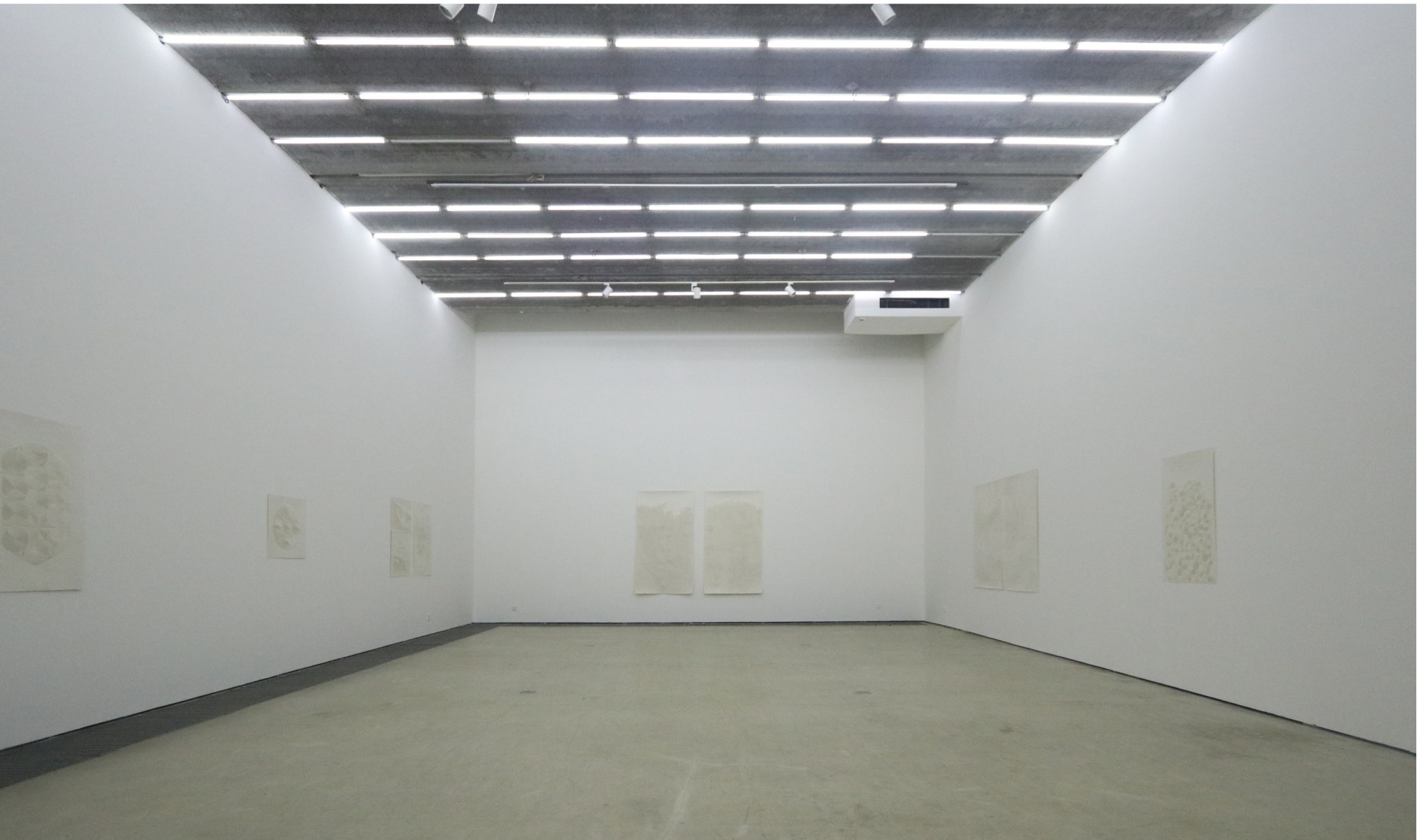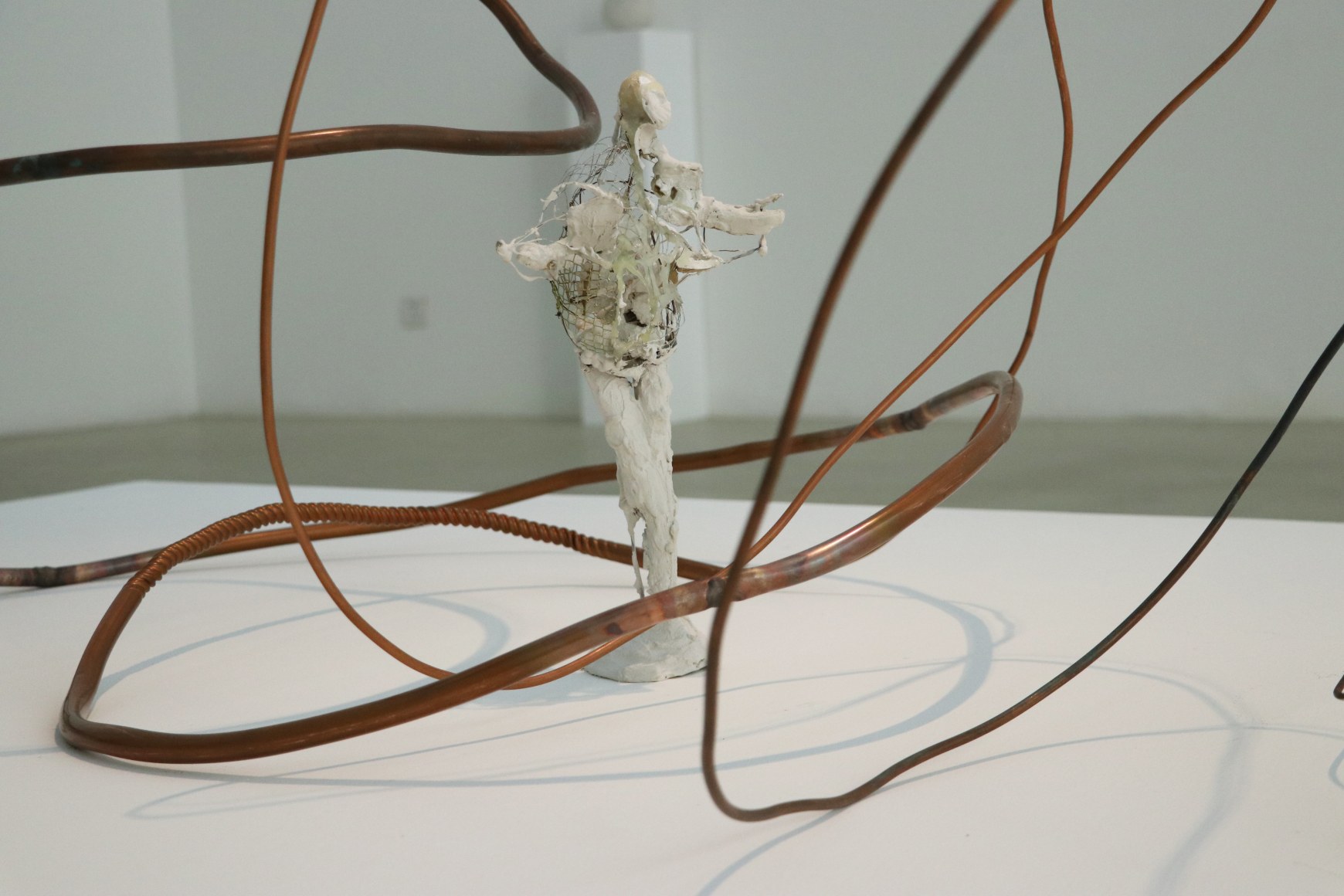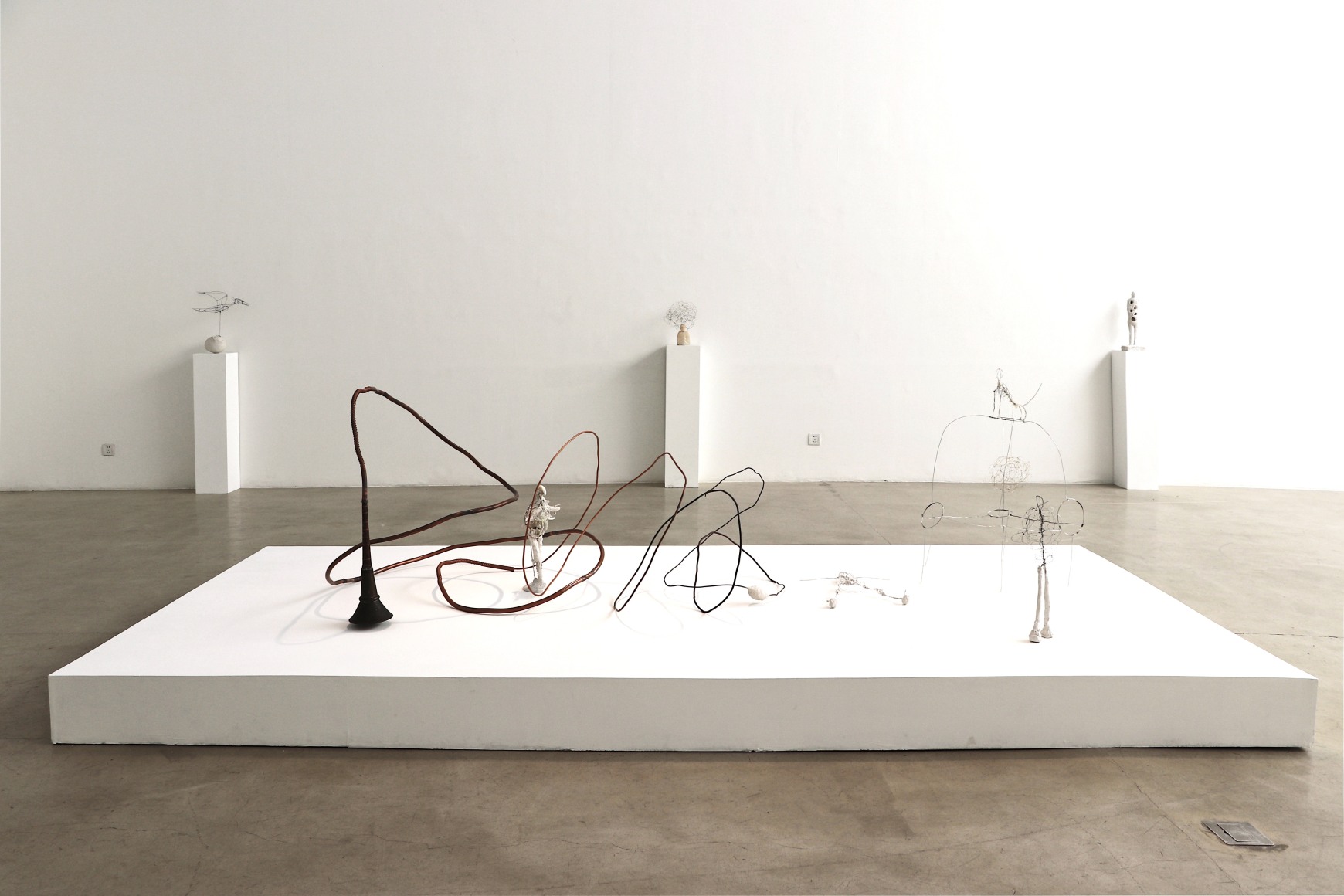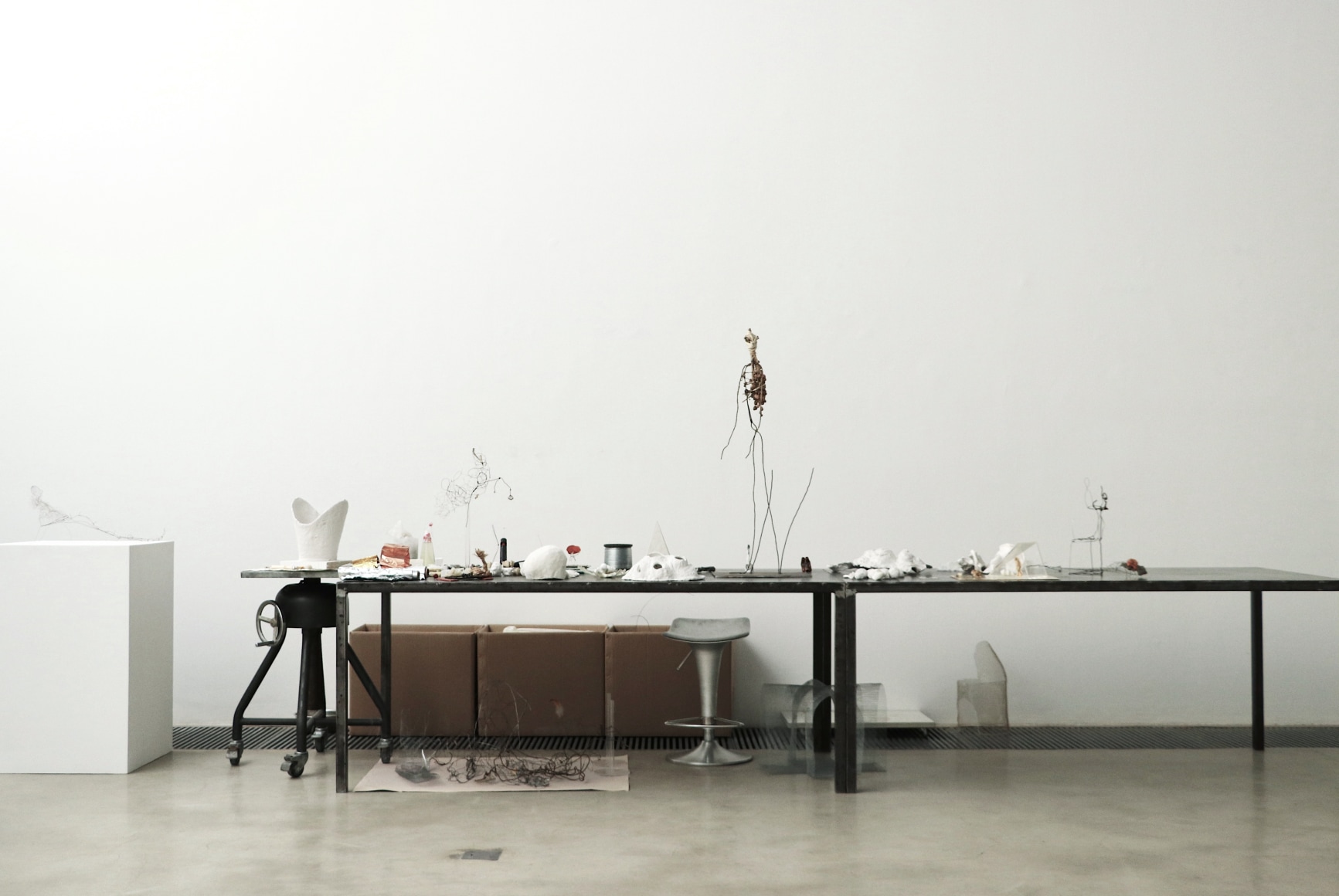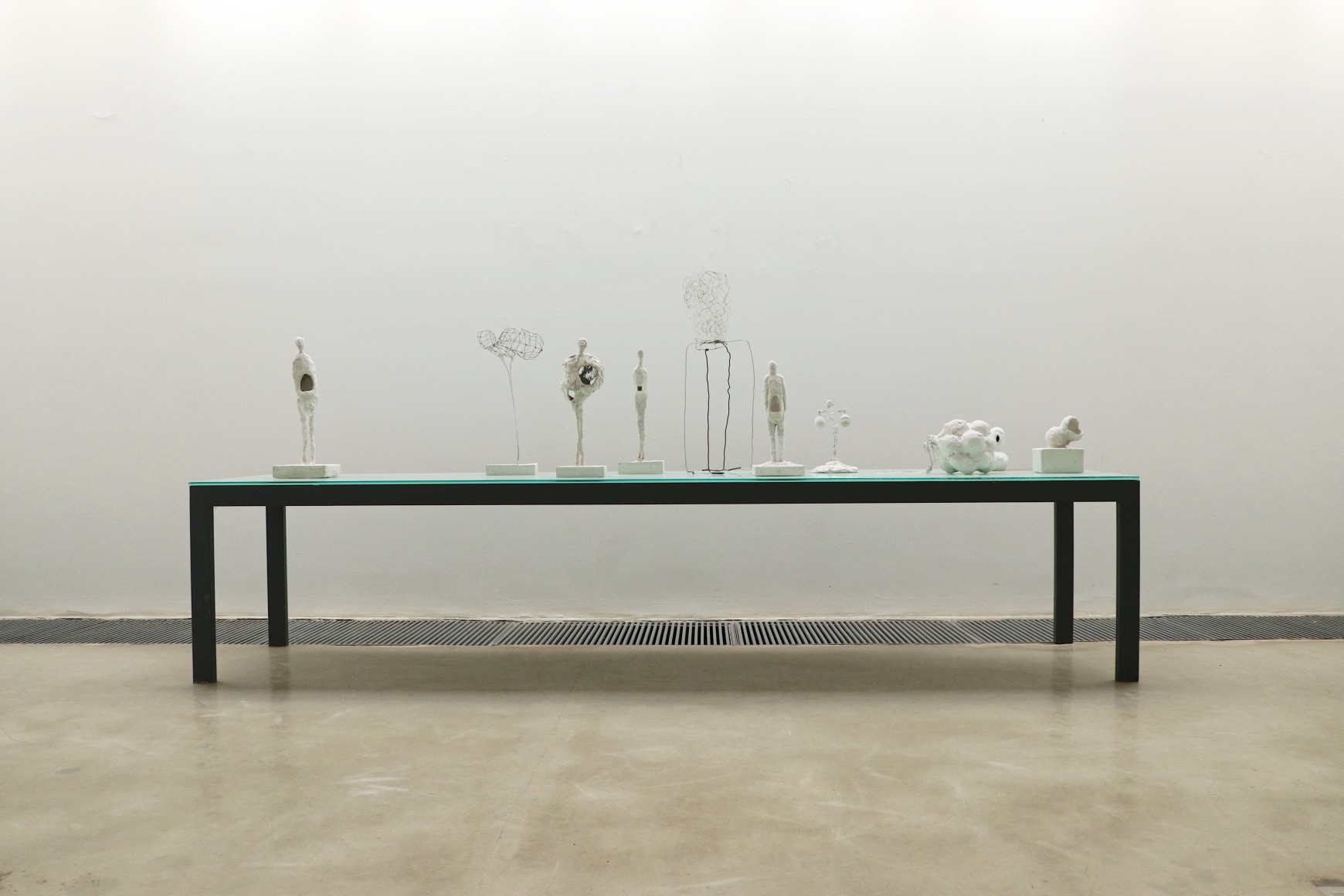Chambers Fine Art is pleased to announce the opening on May 30, 2020 of Fu Xiatong: NUN. This will be her fourth one-person exhibition at the gallery, the successor to Land of Serenity in 2016, Limitless in 2017, and Proliferation in 2018. Born in Shanxi in 1976, Fu Xiaotong received her BA in Fine Arts from the Tianjin Academy of Fine Arts 2000. After working at the Institute of the Arts at North China University of Science and Technology in Tangshan City, Hebei Province, she received her MA in Fine Arts from the department of Experimental Art, China Central Academy of Fine Arts, Beijing in 2013.
Until now, much of the critical commentary on Fu Xiatong has concentrated on the use of Xuan paper as her primary medium and her relationship to classical tradition Chinese landscape painting. In particular, it is her development of a “language of the needle”, in which through feats of physical endurance and extreme concentration she perforates the surface of the paper many thousands of times until the chosen image emerges, that has been the most consistent feature of her work. In the three exhibitions already mentioned, there was a steady evolution in the imagery she favors. The mountains, rocks, rapidly moving water and waves that she initially favored were soon joined by a more abstract language of forms, reminiscent of organic and molecular structures.
Another important aspect of her practice, seemingly at odds with the methodical execution of her paper works, is her attraction to bricolage, revealed in all its eccentricity in the 32 sculptural forms made from wire and a wide range found objects including bones, legs of tables or chairs, shoe - trees etc. included in the exhibition Limitless. With these, she stated that her “purpose is not to present a certain historical event but to integrate the ancient intellects, rites, beliefs, and other human experiences and echoes of memories in different time hierarchies into an eternal now.” Although there is no apparent connection between Fu Xiaotong’s pristine and meditative works on paper and imaginative world of her sculpture, they both emerge from her intuitive response to a wide range of cultural antecedents, religious, philosophical, and anthropological.
The current exhibition at Chambers Fine Art, NUN, is divided thematically into three sections inspired by the socio-political analysis of the German - American philosopher Leo Strauss, Shadows, Collapse and Disorientation. In addition, three times a week, Fu Xiaotong will be working in one of the galleries, providing a unique opportunity for visitors to encounter the artist and observe her daily practice. In an ongoing and unpublished statement Fu Xiaotong has given a free-wheeling account of her sources of inspiration that underly the selection of works in the exhibition. One of the primary inspirations is Leo Strauss’s theory of the “Second Cave’’, a reference to Plato’s famous “Allegory of the Cave.” “In Strauss’s approach,” she wrote, “he used the cave as a metaphor for the way in which human perception emanates from “opinion” (obtained in the first cave to “prejudice” (second cave, i.e. religion), and then ultimately attain “knowledge” (sunlight).”
Fu Xiaotong’s researches have led her in many different directions. The symbolism and use of caves in the ancient world, the wide-spread belief that life originated in water, leads to a far-ranging discussion of the origins of the letter “N” which was a pictographic symbol of a snake in ancient Egypt. Of particular fascination to her was Nun, the oldest Egyptian god of primeval waters. She contrasts the meanings attributed to serpents in the ancient world with the Biblical serpent and its complex role in monotheism. “In Chinese culture,” she states, “the worship of snakes appears as a harmonious brother-sister relationship between Nuwa and Fuxi, rather than the spirit of rebellion in the West.” Whether or not Fu Xiaotong’s weaving together of complex historical materials would pass muster with anthropologists and cultural historians, they do provide fascinating insights into her state of mind while working on the exhibition NUN.
The first part of the exhibition Shadows comprises a new group of pinprick works on Xuan paper, the imagery of cell -tissue referring to the Covid-19 crisis. The small sculptures constituting the second part Collapse respond to societal collapse and the chaos of social relations. In the third part Disorientation the image of two intertwining snakes create a ghostly visual effect.

